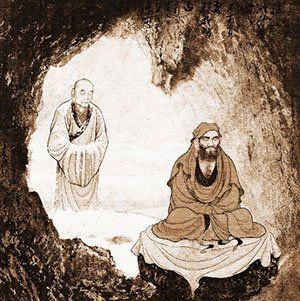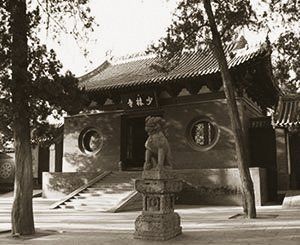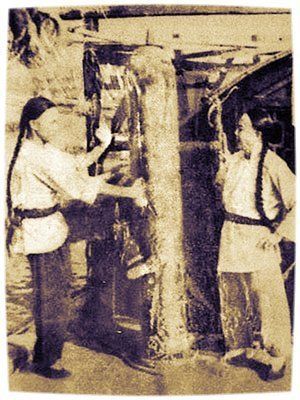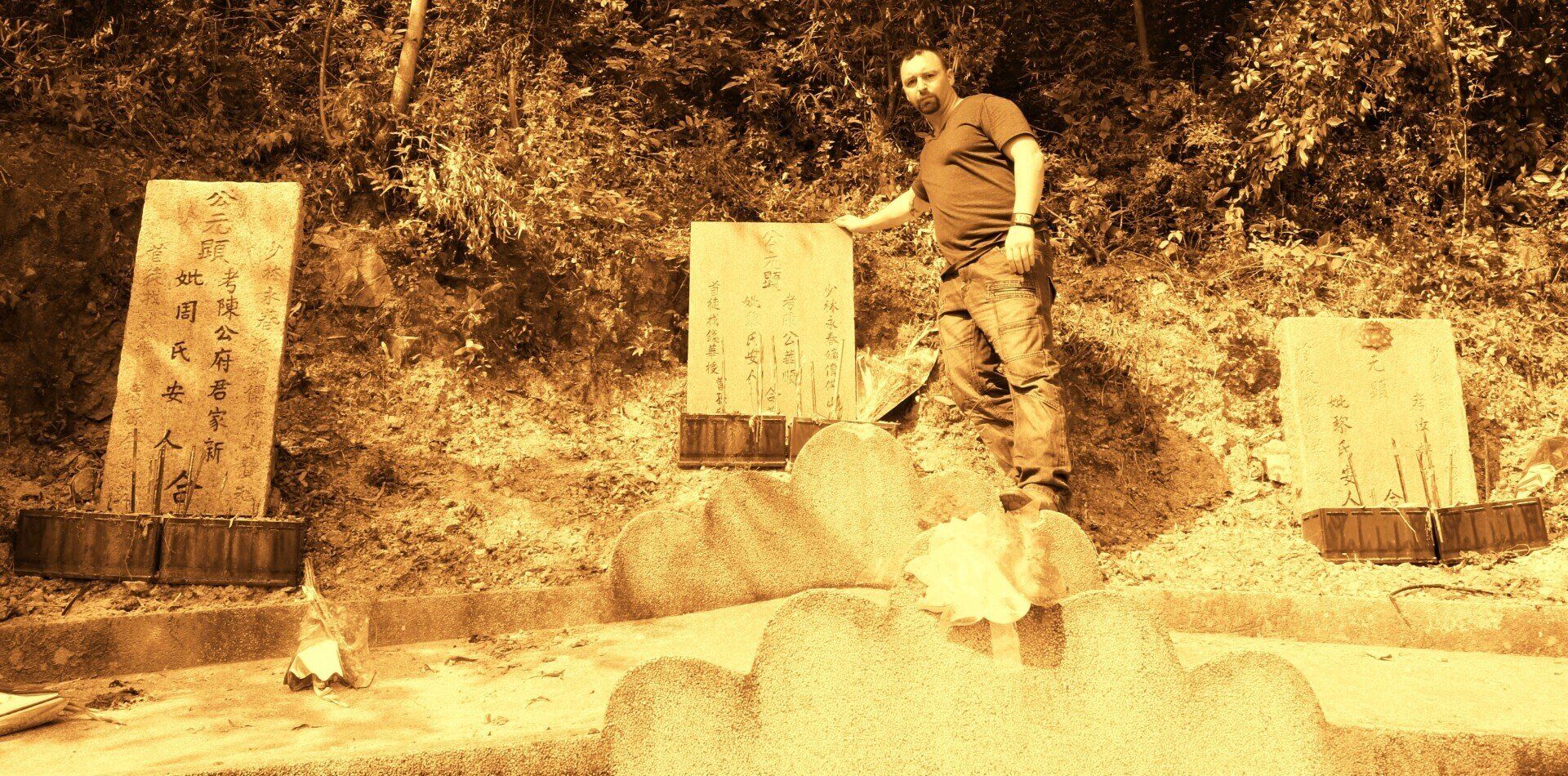
Chinese martial arts have a history going back several thousands of years. Most sources trace the origin to the Siu Lum monastery (shaolin temple) in Henan province china.
Founded around the period 495AD by a monk called Bodhidharma who introduced Zen Buddhism into China from India. Bodhidharma found that his disciples were not physically prepared for the extensive form of meditation that was an integral part of his teachings so he devised a set of exercises primarily to prepare his disciples for their lessons.
Later these developed into self defence principles. Over the centuries the Shaolin monks through continual practice and progression developed a formidable fighting style of open hand and weapon techniques.
During the reign of Ming dynasty (1368 – 1644), Kung Fu was practiced in the Siu Lum monastery primarily as a form of physical exercise. Then with the establishment of the Ching dynasty (1644- 1911), and the harsh ruling of the Manchurians Kung Fu and weapons were banned.
The Sil Lum monastery became a secret training ground for a revolutionary army, trained in Kung Fu. At that time it took ten to twenty years to master a traditional style. Five grandmasters of the Siu Lum monastery started to develop a system that could be mastered in only five to seven years, as well as a system that could overthrow all other systems.

Master Fung To Tak was said to be the founder of the White Tiger Kung Fu system and to be an expert in the internal system of martial arts and also being a Taoist monk.
Miu Hin was an unshaven Buddhist Shaolin disciple and was said to have taught the five shapes or the five pattern Hung Kuen boxing. He also taught his daughter Miu Tsui (the five shapes or five pattern Kung Fu is the five Classical Chinese animals of the southern Chinese martial arts. They are the Dragon, Snake, Tiger, Leopard, and Crane).
The five Elders chose the best and most effective techniques from their styles, but before the new system could be taught the Siu Lum monastery was burnt down by the Manchu army and the five elders fled never to see each other again. One of the elders Ng Mui went south where she settled at White Crane temple at Tai Leung Mountain (also known as Chai Ha Mountain) on the border of Szechwan and Yunnan province where she continued practicing martial arts and Buddhism.
It is said that when Ng Mui fled from Siu Lum she travelled extensively and perfected her fighting skills. It was at this time she witnessed a fight between a fox and a crane and she then started to mimic the movements of the two animals converting them into human form. For example the Bong Sao movement in wing Chun comes from the Wing defence of the crane and the Fook Sao comes from the Fox Paw.
While Ng Mui was living at White Crane temple, she befriended a father Yim Yee and his daughter Yim Wing Chun when in the small village, at the bottom of Mount Tai Leung while they were manning their stall. After becoming quite acquainted with the family, Ng Mui found out that Yim Wing Chun was being forced into marrying a local bully. Ng Mui told Yim Wing Chun to tell him that she will marry him if he can defeat her in a fight. The bully accepted the challenge knowing that this would be impossible.
They left and Ng Mui started to teach Yim Wing Chun the system that she and the other five elders were developing in the Siu Lum monastery before it was destroyed. Six months later Ng Mui and Yim Wing Chun returned to the village and Yim Wing Chun confronted the bully and easily defeated him with the techniques that she had learnt from Ng Mui.Yim Wing Chun continued to study with Ng Mui for another year and a half, learning advanced techniques from Ng Mui’s boxing form. Ng Mui decided to leave the village but before she did she gave her new system a name. She named it “Wing Chun” meaning “Eternal Springtime”. She said goodbye to Yim Wing Chun and her father and went on her way never to been seen again.
Throughout the years Yim Wing Chun advanced the techniques then eventually married and passed on her system to her husband Leung Bok Chau who already was an exceptional martial artist.
Leung Bok Chau then taught the Wing Chun techniques to Leung Lan Kwai a herbalist. He then passed on his skills to Wong Wah Bo Leung Lan Kwai’s nephew who was an actor on the “Red Junk”, which was a group of travelling opera performers that made its way up and down China’s coastal waters performing shows.
Wong Wah Bo then taught Leung Yee Tei who was a sailor on the Red Junk a “Poler” to be precise, as he used a long pole to manoeuvre the junk into a desired position.

One of the Oldest Wing Chun Photo known
Leung Yee Tei had been taught the Long pole techniques years earlier from Master Chi Shin, one of the five elders of the Siu Lum monastery who was a master of the long pole. Master Chi Shin disguised himself on the red junk as a cook to escape from the Manchurian army.
One day Wong Wah Bo and Leung Yee Tei had a challenge match to see who was most skilled in the Martial art. Leung Yee Tei who was armed with a long pole and Wong Wah Bo with a pair of Knives. Wong Wah Bo defeated Leung Yee Tei very easily. Wong Wah Bo accepted Leung Yee Tei as a student. It was here that the long pole techniques were introduced into the Wing Chun System.
Leung Yee Tei then accepted Leung Jan as his student, who was a herbal doctor in Foshan in Kwangtung Province of Southern China. Leung Jan, also became well-known for his fighting skills and fights. Leung Jan had two sons, Leung Chun and Leung Bik in which he taught both of them his Wing Chun techniques.
Chan Wah Shun, Leung Jan’s neighbour went to Leung Jan and asked him if he could teach him but Leung Jan declined the request as he was not a family member. Chan Wah Shun was determined to learn, so he started to spy on Leung Jan through a crack in the fence while he was teaching his two sons. Leung Jan found out what was happening and immediately put a stop to it. Leung Jan finally accepted Chan Wah Shun as a student. Chan Wah Shun went on to be the chief instructor of the Manchu soldiers known as the “Soldiers of the Eight Banners”
Leung Jan Eventually passed away and Leung Bik moved to Hong Kong and went into the family business as a doctor nothing is known on Leung Jan’s second son Leung Chun except that he passed away very early.
Chan Wah shun stayed on in China and taught for over 30 years during that time he only accepted 16 students and only one of them will later become the most famous master of the Wing Chun system.

Chan Wah Shun grave, Shunde 2005
